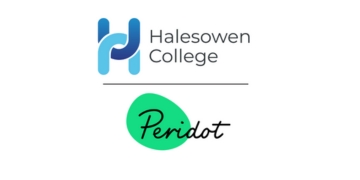Not quite halfway through the first term, schools’ work on transition is already morphing into phase two: preventing ‘the year 7 dip’. For too many, a positive start quickly turns to disengagement. For others, disengagement was already ‘baked in’. A few weeks was never going to undo the habits that come with that.
Teachers know the signs: waning enthusiasm, growing anxiety, unexplained absence. National research led by ImpactEd Group shows this is no coincidence. Tracking some 80,000 pupils, the study found that over one in four begin to disengage during Year 7, with sharp drops in enjoyment, trust and feelings of safety.
Follow-up research revealed in these pages two weeks ago that low-income white children start year 7 already less engaged than their peers across all measures: they value learning less, are less likely to put effort in and are less likely to enjoy being in school.
The challenge is particularly stark in the north east, where department for education attendance figures for last autumn put the persistent absence rate at 19.6 per cent, compared with a national figure of 17.8 per cent.
Put simply: if pupils aren’t settled by now, the risk of long-term disengagement grows.
The good news is that schools are not powerless. Our KEY+ Transitions programme points to practical steps that can help pupils belong, connect and thrive.
Based on lessons from that programme, here are five actions school leaders can take right now.
Prioritise belonging
Transition isn’t just about navigating timetables and classrooms. It’s about identity. Pupils need to feel that they belong.
In fact, belonging is one of the strongest predictors of motivation and attendance. If pupils feel known, safe and valued, they are far less likely to drift into disengagement.
Schools can prioritise this by building connections with form tutors, creating welcoming rituals and ensuring no child feels invisible in the first term.
Embed youth work principles
While teachers and pastoral staff provide structure and guidance, these are often not enough for the least engaged. Youth work adds something complementary: relationships based on trust, informal conversation and the freedom to experiment.
When those principles are embedded in schools, pupils feel heard and empowered. That’s exactly what’s needed when confidence and belonging are at risk.
Give pupils agency
That’s because pupils who help shape activities feel a stronger sense of ownership. Involving them in designing projects, even on a small scale, builds motivation and confidence.
Pupils involved in our programme consistently reported higher resilience and greater confidence as a result of leading group projects.
One Year 7 explained: “I didn’t want to come into school before [the project]. Doing this has made me want to come in. I make sure I come in now.”
Create safe peer groups
One of the key reasons this works is because small, focused groups give pupils a chance to share their worries, support one another and build friendships in a way that busy classrooms don’t.
Indeed, the Education Endowment Foundation highlights peer support as a protective factor during transition.
As one Year 7 pupil supported by KEY+ put it: “Seeing other friends worried, just like me, helped me realise that I’m not by myself or alone.”
Partner with others
Of course, youth work isn’t a school’s natural way of working, and there’s no avoiding the sector’s capacity issues. But the good news is that schools don’t have to carry the load alone.
Across the country, charities and youth organisations are clamouring for opportunities to meet young people where they are. They can bring extra capacity and expertise in resilience-building, peer work and informal learning – the kind of wraparound support that prevents a rocky start from turning into long-term disengagement.
The Year 7 dip is real, but it is not inevitable. With national research showing the scale of the problem and practice-based evidence showing what works, schools have a unique chance to intervene.
The evidence is clear: with the right support, pupils don’t just survive transition, they can thrive through it. Midway through the term, the window for action is still open.












Your thoughts